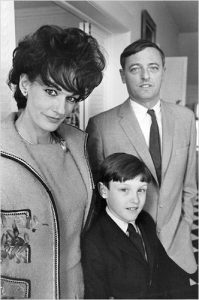
Listen to Debussy on an old vinyl record and you may detect the equivalent of someone tap dancing in the background. For sure, this is not what the master of pianissimo envisioned.
A new book that has created ripples this year is David Sax’ The Revenge of Analog (2016). He discusses the revival of older media forms that have been eclipsed by all things digital. Your old Pentax 35-millimeter camera is an analog device, as are the once-cherished vinyl records albums taking up space in your basement. In the case of these two forms, you can actually see what the medium was capturing in its mechanical ‘software;’ each frame of film carries a miniature impression of its content, as do the microscopic groves of a record. A high sheen visible on its surface means it carries lots of ‘close together’ grove wiggles representing higher sound frequencies. A Mozart recording will have a brighter sheen than one that gives us a more bass-heavy Brahms.
By contrast, digital forms give us files made up of electronic imprints that are mostly invisible. We now take pictures with our cameras, never giving much thought to the storage media. And many of us get our music from a “cloud,” wherever that is.
Sax wants to make the point that there is a resurgence of analog forms. In the first three chapters of his book he points out the return of what we thought was gone: the modest rise in the number of bands that release their music on vinyl, and the rebirth of film manufacturing for a steadfast group of artists and filmmakers who like the look of images on celluloid. He also notes that we still depend on the printed page. And for good reason. The book remains a supremely portable medium, though his argument that bookstores are popping up everywhere seems like a stretch.
Older Luddites are clearly not a sign of the rebirth he describes. The “revenge” of analog is happening because of the young and the cool.
I should be the kind of person most receptive to his argument. After all, I’m among those who have lamented the capture of persons by their digital screens. But I’m also in the class of “geezers” he mentions who still prowl the bins of used record stores. He makes it clear that media-use habits of older adults do not represent the rebirth he sees. Sax wants us to know that the “revenge” of analog is happening because of the young and the cool.
Fun as it is, the book leaves me mostly unconvinced. In the case of film, he misses the best argument for its preservation: that it often looks better. Watch a movie in 4K-digital and it can create a one-dimensional look that others have described as the “soap opera effect.” Colors are bright but not rich. Sets and images often look flat. There’s something about the residual blur of passing light through a celluloid image that makes a projected film so watchable. No wonder directors like Judd Apatow and Wes Anderson still use film technologies that blossomed in 1950s.
Alas, vinyl records have not aged as well. Many are fine, but among its residual problems, vinyl is a natural collector of dust, with individual particles played back as a small click. Listen to Debussy on an old vinyl record and you may detect the equivalent of someone tap dancing in the background. For sure, this is not what the master of pianissimo envisioned.
Sax gets some things right, and never more so than in an opening quote from the Toronto theorist, Marshall McLuhan. Some of the media insights from the media sage have not aged well. But McLuhan was spot-on noting that “a new medium is never an addition to an old one, nor does it leave the old in peace. It never ceases to oppress the older media until it finds new shapes and positions for them.” Those of us who are interesting in such things avidly teach this lesson. Newer media don’t necessarily eclipse the old; most co-exist, evolve, and sometimes fade.
